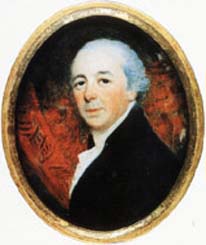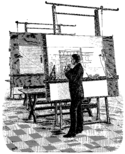John Nash
 Ikke at forveksle med John Forbes Nash.
Ikke at forveksle med John Forbes Nash.
| John Nash | ||
|---|---|---|
 | ||
| Personlig information | ||
| Født | 18. januar 1752 Lambeth | |
| Død | 13. maj 1835 (83 år) East Cowes Castle | |
| Hvilested | St. Mildred's Church, Whippingham | |
| Land | Britiske Imperium | |
| Arbejde | ||
| Kendte værker | All Souls Church, Langham Place, Clarence House, Royal Pavilion, Marble Arch | |
| Information med symbolet | ||
John Nash (født 18. januar 1752, død 13. maj 1835) var en britisk arkitekt, som mellem 1800 og 1830 satte afgørende præg på London og Storbritannien gennem sine arbejder for kong Georg 4., både i dennes periode som prinsregent fra 1811 og efter tronbestigelsen i 1820. Nash stod bl.a. for ombygningen af Buckingham Palace i 1820'erne. Da dette byggeri blev for dyrt, blev Nash afskediget i 1829, og da kongen døde året efter, var Nash' storhedsperiode slut.
Nogle af Nash' værker
Royal Pavilion, Brighton
Eksterne henvisninger
| Spire |
|
Medier brugt på denne side
Architect at his drawing board. This wood engraving was published on May 25, 1893, in Teknisk Ukeblad, Norway's leading engineering journal. It illustrates an article about a new kind of upright drawing board delivered by the firm J. M. Voith in Heidenheim a. d. Brenz (in south Germany). The board measures 1800 x 1250 mm, the total height is 2800 mm, and the weight 220 kg.
Marble Arch, London, England. Originally the front entrance to Buckingham Palace and now at the end junction of Park Lane and Oxford Street, which location is accordingly known as Marble Arch.
Photographed by Adrian Pingstone in June 2005 (soon after restoration) and released to the public domain.Forfatter/Opretter: flamenc, Licens: CC BY-SA 3.0
Brighton (United Kingdom): Panorama of the western front of the Royal Pavilion







